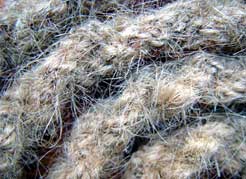
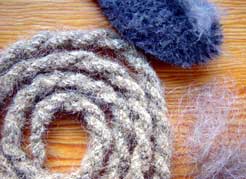
a) Human hair or animal pet hair for cordage material.
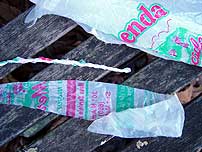
b) Cordage material from plastic grocery bags.
For those of us who desire to learn and practice primitive
skills, but live in an urban environment, sometimes finding materials
can be a problem. Projects that require natural resources are
sometimes difficult to find, especially if the wilderness is many
miles from the city. Listed below are urban resources that can
be substituted for wilderness resources. The idea is to learn
the skills. The real materials will appear as you pursue your
interests. Teachers, instructors, and students will find the list
helpful in seeking creative alternatives to obtaining the needed
materials for their primitive technology classes and projects.
1. Cordage material:

a) Human hair or animal pet hair for cordage material.
b) Cordage material from plastic grocery bags.
2.
Bones from the butcher shop or dried and cleaned bones from the
pet food store.
3.
For making an excellent substitute for
home-made hide glue or commercial hide glue, use Knox Unflavored
Gelatine and a small amount of water. Hide glue is basically a
protein called collagen, which forms connective tissues in animals.
Collagen holds tissues together in animals, including people.
Knox Unflavored Gelatine is made from cattle bone chips and pork
skin.

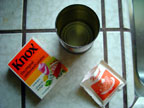


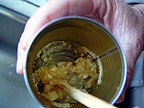
 \
\ 
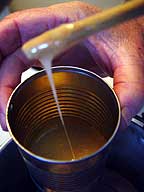
4.
Old bottles, mirrors, or thick, glass window panes for knapping.

5.
Cedar shingles from the lumberyard for your fire-by-friction hearthboard.
6.
Dog chews for rawhide and rawhide lacing called babiche. First
soak in water to soften, then unfold. Dog chews can be purchased
from the pet food store
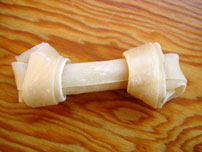
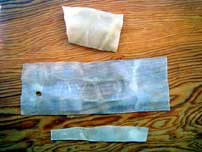
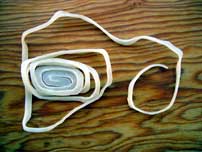
7.
Beef heel tendon from an Asian meat market for sinew.
8.
From your yard and garden:
a) Ornamental plants like New Zealand flax for fiber and cordage material.
Apple shoots from pruning.
b) Saplings from various trees and shrubs for arrows and atlatl darts.
c) Bamboo garden stakes for atlatl darts.
9.
Scrap wood from the dump.
a) Foldable shaving horse made out of discarded 2 x 4's and scrap wood.
10.
Old non-belted tires:
11.
Wooden dowels from the hardware store for arrow shafts (check
the spine for your appropriate bow weight). Feathers for fletching
from a crafts store. Empty bullet shells for arrow blunts. Cardboard
tubing for the quiver.
12.
PVC pipes:
a) Large PVC pipes for hide scraping logs.
b) Small PVC pipes for didjeridoos (Australian musical instrument).
13.
Scrap cardboard:
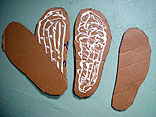
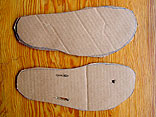
a) Make cardboard sandals
14.
Park your car in the sun and use it as a dehydrator or drying
kiln. Dry fruit, vegetables, seaweed, or strips of meat inside
the heat of your vehicle. You'll avoid flies and other insects
from feasting on your food. Also, you can dry bow staves in your
car. Be careful of leaving the staves inside too long to avoid
over drying the wood.
15.
Duct tape for fletching atlatl darts
or arrows.
16. Create knapped blades using an old toilet.
17.
More urban resources in Chuck Kritzon's Supplies
for the Urban Abo.
1. Plastic pieces from plastic trash cans:
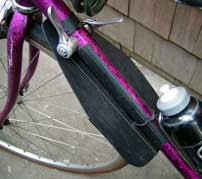
a) Create fenders for your bicycle.
2.
Soda cans and coffee cans for lanterns, eating containers, cooking
pots, or stoves.
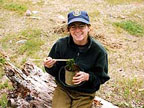

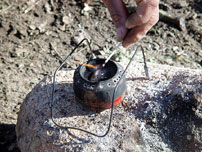
3.
Plastic trash bags:
a) Cut a hole on the bottom, then wear it as rain gear.
b) When melted, it makes a good adhesive (example: Stuff shredded trash bags into the ferrule of a metal shovel, melt the trash bag with a flame, then insert the wooden handle into the ferrule.).
4.
"I have frequently used two soda cans with the tops cut off
as an oven. I use the bottom 3/4 of both cans put together to
make the oven. Just put in some jerky, a potato sliced into quarters,
and a carrot sliced into quarters and in half. Then add a dab
of butter and roast in the coals. It makes a great meal in a can.
This started when I was camping and wanted to bake a potato, but
did not have any tin foil. So, we improvised and have been using
the can method many times. It is far superior to foil cooking.
I also frequently dry extra corn on the cob and remove the kernels
after they are cooked and dried. The dried corn are great to eat
dry and taste good in the "canned stew" with jerky.
I have cooked fresh trout in the soda can oven. The fish is cut
in half and stuffed into two seperate can ovens. If put together
tightly, it will hold in all the steam and cook faster and better.
Unfortunately, nowadays you can find the soda cans all over the
mountains and desert in times of need."
Idea submitted by Mark Munds
E-mail your comments to "Dino Labiste" at KahikoArts@yahoo.com or "Bob Gillis" at bob@shelter-systems.com
We hope the information on the PrimitiveWays website is both instructional and enjoyable. Understand that no warranty or guarantee is included. We expect adults to act responsibly and children to be supervised by a responsible adult. If you use the information on this site to create your own projects or if you try techniques described on PrimitiveWays, behave in accordance with applicable laws, and think about the sustainability of natural resources. Using tools or techniques described on PrimitiveWays can be dangerous with exposure to heavy, sharp or pointed objects, fire, stone tools and hazards present in outdoor settings. Without proper care and caution, or if done incorrectly, there is a risk of property damage, personal injury or even death. So, be advised: Anyone using any information provided on the PrimitiveWays website assumes responsibility for using proper care and caution to protect property, the life, health and safety of himself or herself and all others. He or she expressly assumes all risk of harm or damage to all persons or property proximately caused by the use of this information.
© PrimitiveWays 2013